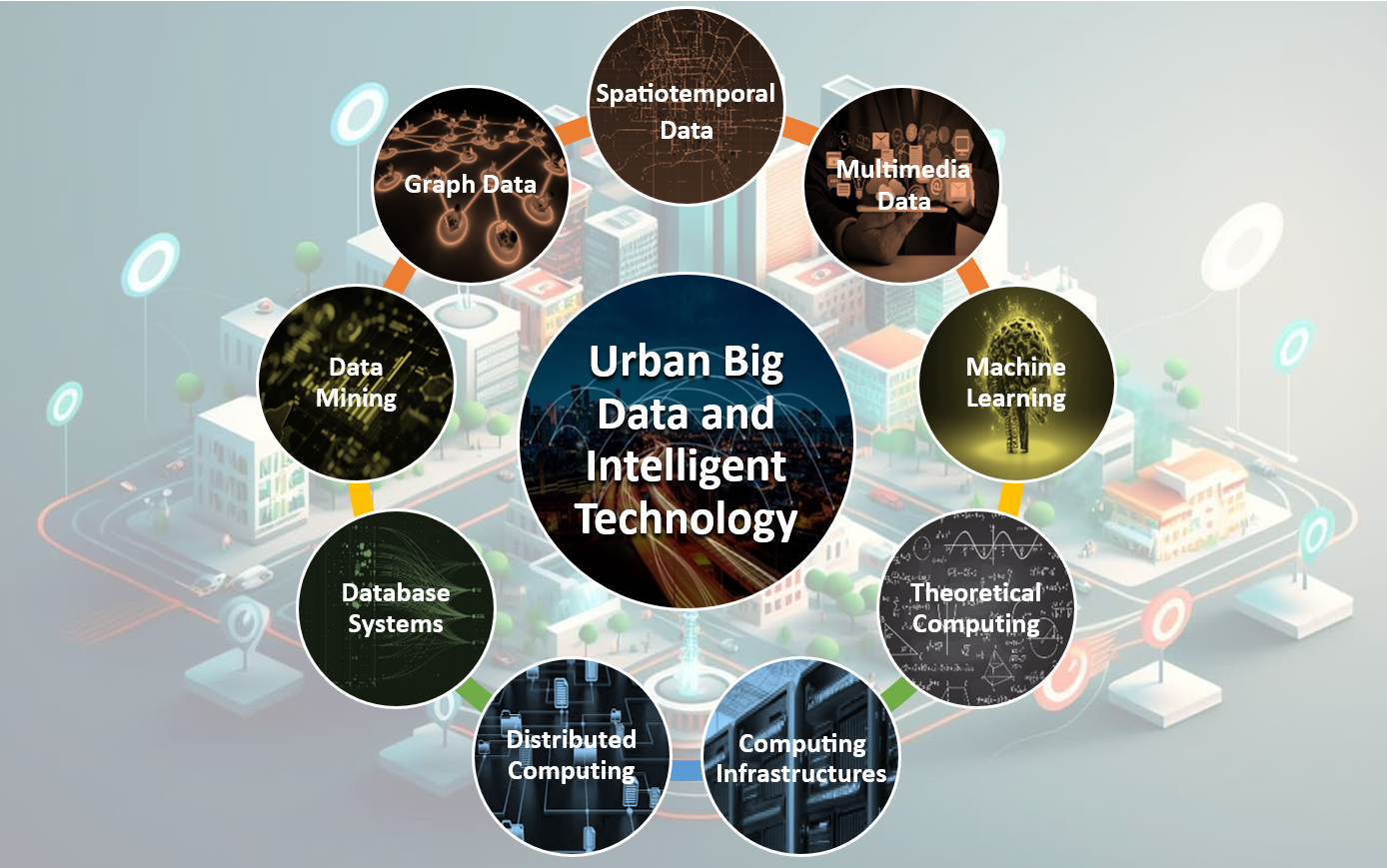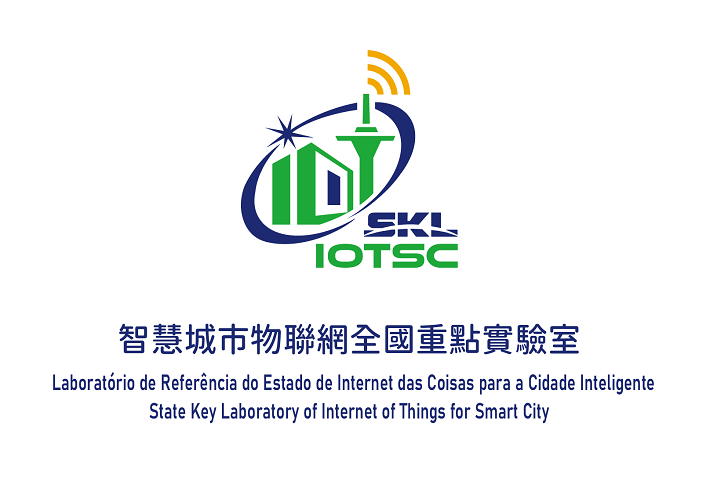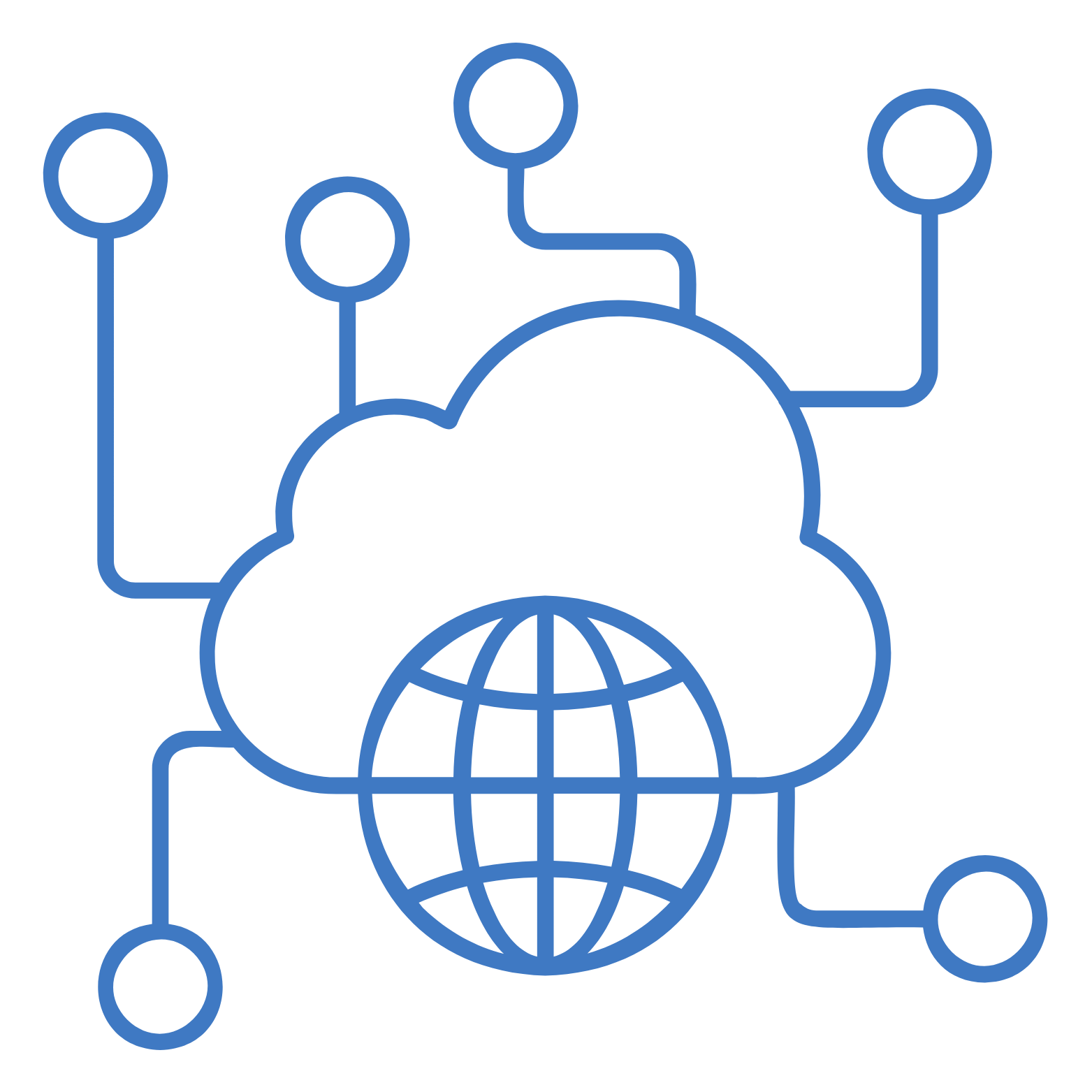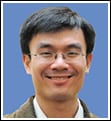Urban Big Data and Intelligent Technology
Introduction
A tremendous amount of urban Big Data is being generated in urban environments through various sources such as IoT sensors, mobile devices, social media services, and other digital platforms. This data encompasses information about urban infrastructure, transportation systems, energy consumption, environmental factors, and social dynamics, providing great opportunities to empower smart city applications. In this context, our research on Urban Big Data and Intelligent Technology focuses on bridging the gap from urban Big Data to urban intelligence through Artificial Intelligence. The research group integrates expertise in the whole lifecycle of this process, yielding from cloud computing infrastructures, distributed computing, database systems, theoretical computing, machine learning and data mining algorithms, with a particular focus on the application to multimedia, spatiotemporal, and graph data.

Faculty Members
Research Topics
Machine Learning with Graph Data
Graph data naturally captures the complex connections between data, as witnessed by Today’s connected world. These complex connections can be reflected by the heterogeneous, hyper-relational, and dynamic relationships between nodes in graphs, such as social networks, transportation networks, knowledge graphs, and the Internet of Things, etc. Learning from such graph data can shed light on the hidden properties of the graph, supporting predictive and generative AI applications.

Spatiotemporal Data Mining and Analytics
Spatiotemporal data is ubiquitous in Urban Big Data, including but not limited to mobility data from both humans and vehicles, IoT sensor data, and social media data. By analyzing and mining such data, we can gain valuable insights into patterns, trends, and relationships that exist in both space and time, which serve as a key ingredient providing data intelligence in building downstream smart city applications.
Distributed and Cloud Computing
System support is critical for data-intensive applications, particularly in the realms of cloud computing and machine learning. The research in this direction focuses on optimizing performance, resource efficiency, and system reliability, all of which are critical for scaling modern computational workloads. The current research efforts have been putting on developing elastic runtimes that adaptively manage resources for cloud-based data-intensive applications, creating efficient resource scheduling techniques for scalable machine learning systems, and enhancing profiling and troubleshooting capabilities in distributed systems.

Multimedia Data Processing
Among all types of big data, multimedia big data (such as images and videos) is “the largest big data”. According to Cisco statistics, image and video content account for more than 90% of total Internet traffic. In the rapidly developing mobile network, the proportion of video traffic is as high as 64%. Our current research work is dedicated to improving the visual quality and security of multimedia big data. Key areas include: low-level vision based on deep learning, such as image and video super-resolution, image and video restoration, image generation, etc.; highly-robust multimedia information forensics, such as image forgery detection and localization, deepfake video detection, etc.

Theoretical Computing
Mathematics and algorithms with theoretical guarantees are the foundation of smart computing and intelligent technology. The collection and utilization of urban big data rely on mechanisms that are truthful, fair, and efficient. The design of online and dynamic approximation algorithms is a crucial component in many big data and smart city applications, including urban big data mining, distributed computing, and cloud computing. The study of game theory and computational social choice can also benefit the development of smart cities.












